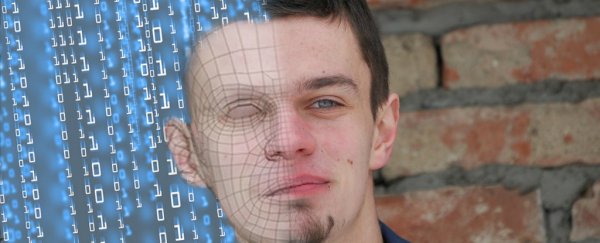This article was written by Michael Gillings, Darrell Kemp, and Martin Hilbert from the University of California, Davis, and was originally published by The Conversation.
Living things accumulate and reproduce information. That's really the driving principle behind life, and behind evolution. But humans have invented a new method of accumulating and reproducing information. It's digital information, and it's growing at an astonishing speed. The number of people using the internet is growing, as are the devices connected to it through the Internet of Things.
Digital information can copy itself perfectly, increases in copy number with every download or view, can be modified (mutated), or combined to generate novel information packets. And it can be expressed through artificial intelligence. These are characteristics similar to living things. So we should probably start thinking about digital technology as being like an organism that can evolve.
Digital information replicates with virtually no energy costs, and has rapid generation times. Artificial intelligence can beat us in chess and on game shows. What's more, it's faster than us, smarter than us in some arenas, and is already in charge of activities that are too complex for us to do efficiently.
To biologists, that sounds like the digital world might be able to out-compete us, as we argue in a paper published in Trends in Ecology & Evolution.
Information growth
Any newly evolving entity can cause upheavals for life on Earth. In fact, all the major evolutionary transitions in the history of life have come about via changes to information storage and transmission.
And the digital revolution has certainly changed the way information is stored and transmitted.
The current storage capacity of the internet is approaching 1024 bytes and is growing at 30 per cent to 40 per cent per year, showing no signs of slowing down.
In the 3.7 billion years since life began, information in living things (DNA) has reached the equivalent of about 1037 bytes. Digital information will grow to this size in 100 years. That's an evolutionary eye-blink.
Winners and losers
During each evolutionary transition, there have been winners and losers. And we need to start asking if the digital transition poses a danger to humanity. We do have the advantage of hindsight to answer this question.
We know that each of earth's evolutionary transitions essentially resulted in the enslavement of the old information carriers. RNA was the original carrier of information. When DNA came along, the role of RNA was relegated to simply relaying messages from DNA to the cell.
When complex cells arose, they subsumed simpler bacterial cells. These became power generators (mitochondria) or solar panels (chloroplasts), serving the needs of the new cell types.
The next transition resulted in organisms with multiple cells. Most of these cells did not pass their information to the next generation, but existed simply to support those few cells that did.
The development of nervous systems that collected information from the environment provided huge advantages for animals. This activity reached its peak in human societies, with transmission of information between generations, via language and culture.
This allowed humans to dominate the planet, such that we have triggered a new geological epoch, the Anthropocene.
Extinctions
So the lessons of evolutionary history are clear. Transitions in the way information is replicated and stored often make existing organisms extinct, can lead to parasitism, or in the best case scenario, lead to a co-operative, mutual relationship.
Global leaders are already warning about the danger of autonomous military robots taking over the world, reminiscent of horror science fiction such as The Terminator.
We are increasingly connected to the digital world via devices, and direct connections to our brains are on the horizon. If we fuse our brains with the internet we may gain new sensory and cognitive capabilities.
But we may also lose our grasp of what is 'us' and what is 'real' (The Matrix, Inception), or expose ourselves to digital parasites.
As our activities and physiological states are increasingly being monitored, tracked and analysed, our every thought and action could be predicted (George Orwell's 1984 or the Minority Report). Biological information systems might then become a predictable cog in a digitally governed social system.
Decision systems and artificial intelligence networks mimic human brains, and coordinate our everyday interactions. They decide on what internet advertisements we are exposed to, execute the majority of stock exchange transactions and run electric power grids. They also have a significant role in human mate choice via internet dating sites.
While we do not necessarily feel that we are the mere flesh-bots of our digital overlords, the merging of humans with the digital world has now passed the point of no return.
In biological terms, fusions like these between two unrelated organisms are called symbioses. In nature, all symbioses have the potential to turn into a parasitic relationship, where one organism fares much better than the other.
We need to start thinking about the internet as an organism that can evolve. Whether it cooperates or competes with us is cause for considerable concern.
Michael Gillings, Professor of Molecular Evolution, Darrell Kemp, Senior Lecturer in Biological Sciences, and Martin Hilbert, Professor in Communication, University of California, Davis.
This article was originally published on The Conversation. Read the original article.
